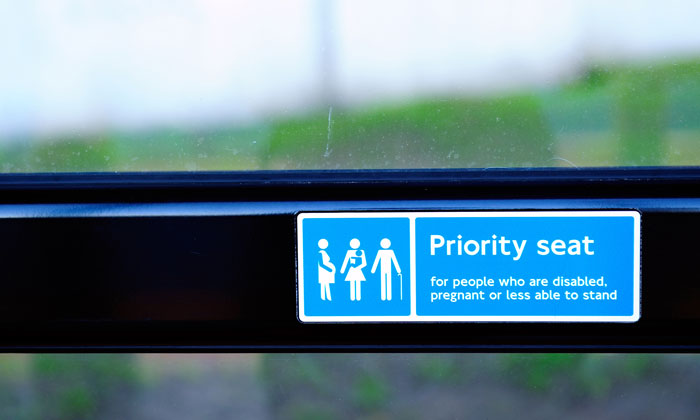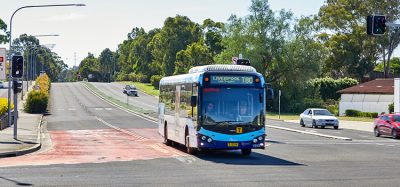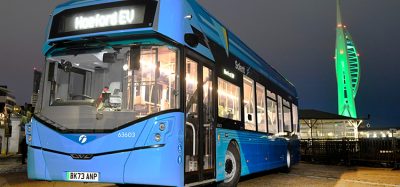Roundtable: Accessibility
- Like
- Digg
- Del
- Tumblr
- VKontakte
- Buffer
- Love This
- Odnoklassniki
- Meneame
- Blogger
- Amazon
- Yahoo Mail
- Gmail
- AOL
- Newsvine
- HackerNews
- Evernote
- MySpace
- Mail.ru
- Viadeo
- Line
- Comments
- Yummly
- SMS
- Viber
- Telegram
- Subscribe
- Skype
- Facebook Messenger
- Kakao
- LiveJournal
- Yammer
- Edgar
- Fintel
- Mix
- Instapaper
- Copy Link
Posted: 2 August 2017 | Intelligent Transport | No comments yet
A panel of industry experts was asked: In what ways do you think the urban public transport industry must improve to make networks more accessible for all passengers?


Miriama Faberova: Growing urbanisation increases the pressure on public transport agencies to enhance the Public Transport Accessibility Level (PTAL). The PTAL measures how easy it is to access public transport networks for each passenger, and includes the walking distance to the nearest bus stop, ease of entering, and frequency and variety of transportation options.
Besides improving the transportation network, scalable automatic fare collection technology is a key enabler for efficiently managing people flow in cities. This can be achieved by combining long-range RAIN RFID technology with a flexible, secure, and NFC-compliant MIFARE solution. NXP’s UCODE DNA CITY, a long-range RFID credential with cryptographic security, ensures end-user privacy while collecting smart data about passenger streams in public transport.
This allows transport operators to optimise their fleet management and react to rush hours in real time. Not having to tap the travel card close to the access gate also eases the usage of public transport for disabled people.
Another challenge for transport operators is to provide sufficient payment facilities for commuters. Leveraging the growing smartphone population, operators can now use NFC-enabled phones to interact with NXP’s secure MIFARE DESFire EV2 smart card IC, allowing users a mobile top-up solution in their hands, and providing a seamless travel experience for passengers.
Jeroen Vermeulen: There are some major issues. It starts with our industry acknowledging that accessibility is vitally important, as is addressing the needs of disabled people to prevent them getting isolated. The requirement for appropriate infrastructure to enable easy entry to the offered service is also a critical factor.
As we are a world leading expert on wheelchair security systems, we already invest in research and testing, and it has been made clear that disabled people require – and demand – safe transport in a comfortable way. This means that the designated area must be spacious enough and equipment must be secured in a proper way. Current legislation does not provide sufficient safety and there are different and new solutions available to prevent wheelchairs and their users from moving or tipping over during transit.
Through innovation and good cooperation with operators and OEMs, the urban public transport industry can easily exceed the minimum requirements and fulfil accessibility in a better and safer way, thus improving the lives of many.
Jim McGeever: Speaking about the situation here in the city of Kaunas (which is probably similar to medium-to-large cities within other new EU member states), I think there are two pressing areas relevant for improvement.
Firstly, there needs to be a development in public transport planning as a complete multimodal urban transport scheme. The development of a single ticket app for PT users to allow them access to all current urban and inter-city urban transport modes would be beneficial. Also, there needs to be serious consideration of the feasibility of driver-free, autonomous public transport vehicles operating on fixed priority lanes throughout the city – park and ride
routes for example.
Secondly, communication needs to be improved, as it’s something that is severely lacking here. We are probably still in the situation of having public transport strategic planning carried out by people who never use the system or its services. If a multimodal scheme was in place, services would be better coordinated to fit the multitude of travel patterns of users. Closer cooperation and communication with citizen groups would help to determine travel patterns, high density routes, and problem factors affecting PT vehicles and service facilities.
Related topics
Multimodality, Passenger Accessibility
Issue
Issue 4 2017








